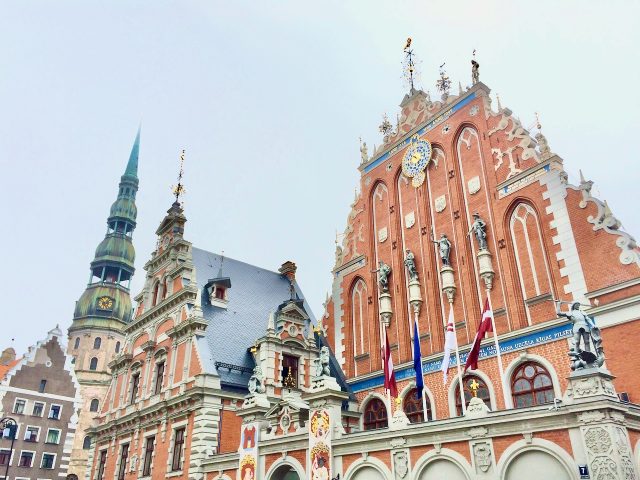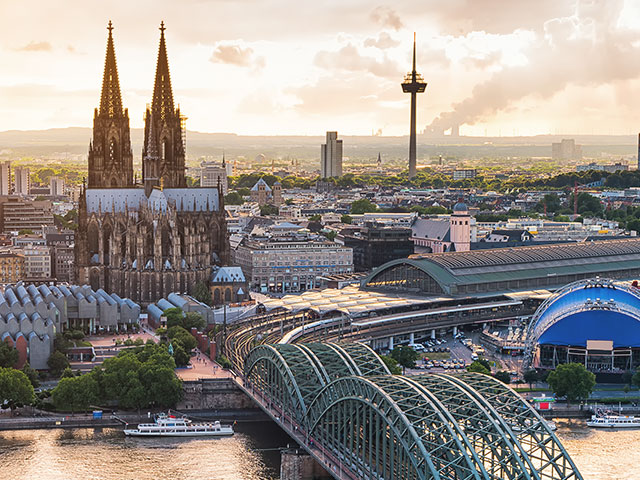Duisburg is
a 498,590
inhabitants city lying in the confluence of rivers Rhine and Ruhr, considered to have the largest fluvial harbour in
all over Europe. It's the 15th largest city in Germany and the 5th
in North Rhine-Westphalia. Duirbug is one of the entrances to Ruhr region (or Ruhrgebiet), an area of 53
towns and 5.3 million people that used to have very important iron and steel
industries as well as a former amount of coal mines. Nowadays all this
heritage has been transformed into art galleries, sport centers...
How do I arrive to Duisburg?
Duisburg is very well connected with other cities in North Rhine-Westphalia, Germany and the neightbouring countries.
- Train: there are often trains to important destinations within NRW like Oberhausen (aprox. 5 minutes), Düsseldorf, Essen (aprox. 15 minutes), Dortmund (aprox. 35 minutes), Xanten (aprox. 45 minutes) or Cologne (aprox. 50 minutes).
- Bus:
there are buses to many cities in NRW state like Düsseldorf, Essen or Cologne.
- Car: having a car, from Duisburg many destinations can be reached easily such as Oberhausen (aprox. 15 minutes), Krefeld (aprox. 20 minutes), Düsseldorf and Essen (aprox. 25 minutes), Mönchengladbach and Xanten (aprox. 40 minutes), Bocholt and Dortmund (aprox. 45 minutes) or Cologne (aprox. 1 hour).
History
Duisburg is a result of the incorporation numerous smaller towns to the proper city. It's said to have been founded in the 5th century as a marketplace on the Westphalian Hellweg trade route (in the border between the Frankish Empire and the Duchy of Saxons). Around 740 it became one of several royal courts of Francia and it was one of the conquered places by Normans in 883 and in the Middle Ages it was part of the Hanseatic League. Duisburg gained importance in the 16th-century, when the cartographer Gerardus Mercator (creator of seminal globes and atlases as well as the Mercator projection, still used in modern world maps) lived, worked and taught in Duisburg for forty years. Since the late 19th century, the city is renowned for its steel industry (being Central Europe's leading site in this sector) but coal-mining never was as important as in other places on the Ruhr. Since the mid-20th century Germany's heavy industries have lost importance and Duisburg had to go through a major structural transformation (losing thousands of jobs in the steel mills while creating new ones in the services and logistics sectors). Nowadays the University of Duisburg-Essen (Ruhr University), with 42,000 students, is in the top 10 of largest German universities and, thanks to the fact that it owns the largest inland harbour of Europe, it also aims to be the terminal of a "New Silk Road" with China.
What can I visit in Duisburg?
These are Duisburg's main attractions:
 |
Exhibition at the German
Inland Waterways Museu |
 |
Tiger & Turtle
|
 |
| Linn Castle Museum |
Close to Duisburg there are many things to do. One of them, for example, is visiting Krefeld, a 227,020 inhabitants city located 20 km southwest from Duisburg that used to be nicknamed Velvet and Silk City because of its economic past. In the city it can be visited Linn Castle Museum (10-18 Tue-Sun from Apr to Oct; 10-17 Tue-Sun from Nov to Mar; 7€/ 3€ adults/ students and people under 18), a 12th century castle that shows the life within it, a collection of Roman and Franconian burial ground and a Baroque hunting lodge built in the 18th century for elector Clemens August. In Krefeld here is an interesting art museum too, Krefeld Art Museum (11-17 Tue-Sun; 12€/ 4€/ free adults/ students/ people under 18), a Contemporary art museum composed of Kaiser Wilhelm Museum (7€/ 3€/ free adults/ students/ people under 18) and Haus Lange and Haus Esters (7€/ 3€/ free adults/ students/ people under 18), two 1920s residential houses designed by Ludwig Mies van der Rohe in the Bauhaus style. The city has also a nice botanical garden, Krefeld Botanical Garden (8-18 from Apr to Oct; 9-17 Mon-Thu and 9-12 Fri from Nov to Mar; free), containing about 5,000 species and varieties of plants in a plot edged with deciduous trees, shrubs and conifers.
 |
| Bocholt Old Town Hall |
From Duisburg, going 60 km north (very close to the German border with the Netherlands), it can be visited the nice city of Bocholt (Bokelt in Dutch), a place with 71,099 inhabitants and an important manufacturing history and which was centered on the textile industry for most of the 19th and 20th centuries. One of its hightlights is visiting its Altstadt, located around the nice Bocholt Old Town Hall, a 17th century Dutch Renaissance style building designed by Jan van Lintelo and restored after the damages suffered in WW2. To get deeper into Bocholt's textile history the visitor can visit LWL-Industrial Textile Plant Museum (10-18 Tue-Sun; 4€/ 2€/ free adults/ students/ people under 16), museum that shows the history of textile production in Münsterland that preserves steam-powered
machines that are operational (so you can see the process of weaving on
different generations of weaving machines) or a
spinning mill. Not far from the city center it's placed Diepenbrock Palace, a 18th century Baroque Schloss own by von Graes zu Loburg family that still preserves Rococo decoration in its rooms and is surrounded by a nice park. Going 15 km wes there's Anholt Castle
(11-17 Tue-Sun from May to Sep; 18€/ 15€/ free adults tour for 90 minutes/ adults tour for 60 minutes/ people under 16), a Baroque water Schloss that was the residence of the prince of Salm-Salm, considered one of the biggest and most beautiful noble's residences
in Münsterland, and inside it's embellished with Flemish tapestries and paintings, especially by Dutch masters. It's surrounded by
a 19th century park that imitates a Swiss landscape around Lake Lucerne.
Where can I eat in Duisburg?
Duisburg is a very important industrial hub and port so its population is very multicultural and that can be seen in the restaurants that are located in the city. Some of the choices are the Laosian restaurant Poukhoun (Heerstraße 256), the Mongolian restaurant Mongo's (Philosophenweg, Am Innenhafen 17-18) or the Italian Enoteca La Trattoria (Friedrich-Wilhelm-Platz 2).
Duisburg is home of one of Germany's best-selling beers, König Pilsener, as well as a popular lemonade brand, Sinalco.
 Buitrago de Lozoya is
a 1,854
inhabitants small town by river Lozoya in Sierra de Guadarrama, in the northern part of the Community of Madrid (Spain). Its old town is very well preserved and was declared BIC (Bien de interés cultural) in 1993.
Buitrago de Lozoya is
a 1,854
inhabitants small town by river Lozoya in Sierra de Guadarrama, in the northern part of the Community of Madrid (Spain). Its old town is very well preserved and was declared BIC (Bien de interés cultural) in 1993.








 11:31
11:31
 Banknotemaniac
Banknotemaniac


 Posted in:
Posted in: 



